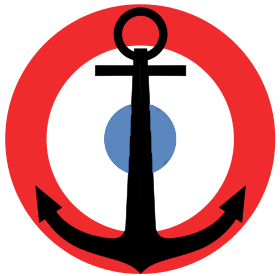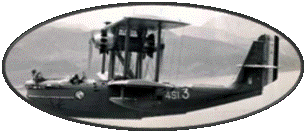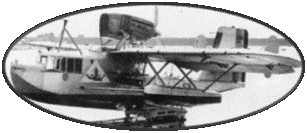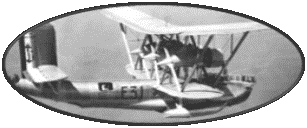The Dornier Do 24 designed
by the Dornier Flugzeugwerke responded to a request from the Royal
Netherlands Navy who wanted to replace its aging Dornier Wals still
used in the Dutch East Indies. On August 3, 1936, the Dutch authorities
sign a contract for the supply of 6 Dornier Do 24. At the request
of the German Navy this time, two other prototypes will be produced
for comparison with the Blohm & Voss BV 138.
The Dornier Do24 presented
itself as a monoplane three-seat seaplane with parasol wing. Of
entirely metallic construction, it had a large fuselage with stabilizers
on both sides of the hull. Its three star engines are mounted on
the wing, and its fuselage ends in a two-tail stabilizer. The fuel
tanks are distributed between the central part of the hull and the
lateral stabilizers. The aircraft could carry an offensive armament
of 1200 kg of Bombs hung under the wings. Its defensive armament
was composed of 3 machine guns of 7.92mm, distributed between the
nose, dorsal or rear turrets. A 20mm gun will later replace the
dorsal machine gun.
The first Dutch Dornier DO24
takes off from Lake Constance on July 3, 1937. These first examples
will be powered by Wright R-1820-F52 Cyclone star 887 hp. These
engines, already fitted to the Martin 139 bombers, were required
by the Dutch technical services in order to limit the diversity
and thus facilitate maintenance. The tests revealed an excellent
apparatus resistant very well to a big sea, and the Dutch, satisfied,
order on July 22, 1937, 12 Do 24 more. The two prototypes ordered
by the German Navy will logically be equipped with three Junkers
Jumo 205C diesel engines of 600 hp. The flight of the first of these
prototypes takes place on January 10, 1938, but the German Sailors,
unlike the Dutch, will return the 2 Dorniers Do24 to their manufacturer
for storage ...
The Dutch seduced by the
aircraft, plan to order 90 Dornier Do24. According to the contract
with the firm Dornier, the first 30 copies must be manufactured
in the Dorniers workshops, and the rest of the production would
be built under license in the Netherlands, in Papendrecht, by the
company Aviolanda. The first 37 copies were to receive the initially
planned engines, the Wright R-1820-F52 of 887 hp, while the following
copies were to be powered by Wright GR-1820-G105A of 1,100 hp, more
powerful and to receive tanks of higher capacity fuel
At the time of the German
invasion of the Netherlands, only 25 Dornier Do24 had been built
by the Aviolanda Company. The assembly line resumes service after
the German occupation and the first 11 devices handed over to the
Luftwaffe will be fitted with Wright engines. The following will
receive BMW Bramo 323R-2 engines. In the end, 159 Dornier 24 will
leave the Dutch production lines, in the Do 24T-1 version for the
majority of them.
The production of 48 other
Dornier Do24 was carried out on an assembly line in France, in the
workshops of the manufacturer CAMS in Sartrouville. After the liberation,
this same factory will produce 40 specimens for the French Navy.
They will be used until 1952.
Thirty-seven Dornier Do24s
made in Germany or the Netherlands were transferred to the East
Indies during the German invasion of the Netherlands in May 1940.
One of these aircraft claimed,
on December 17, 1941, the destruction of a Japanese destroyer escorting
an invasion fleet at Miri in British Borneo. On January 10, 1942,
another Dutch Dornier Do24 spotted a Japanese invasion fleet heading
for the island of Tarakan in Dutch Borneo. The crew can alert the
allies who will have time to destroy the oil installations before
they fall into Japanese hands. Six Dutch Do24 dornier will be donated
to the RAAF (Royal Australian Air Force) after the Japanese invasion
of the Dutch East Indies. They were used in the RAAF as a transport
device in 1944.
Note that a German Dornier
Do24 was forced to a forced landing in the Sudéois Neutre
territory on October 31, 1944. Initially interned, the aircraft
will be purchased by the Swedish authorities and will be used until
1952.
In 1944, 12 Dornier Do24
made in the Netherlands were delivered to Spain, joined, after the
war, by some Do 24 of French construction. These Spanish Dornier
Do24s will be used until 1967. One of them will join in 1971 Lake
Constance, site of Dornier, and will be exposed.









